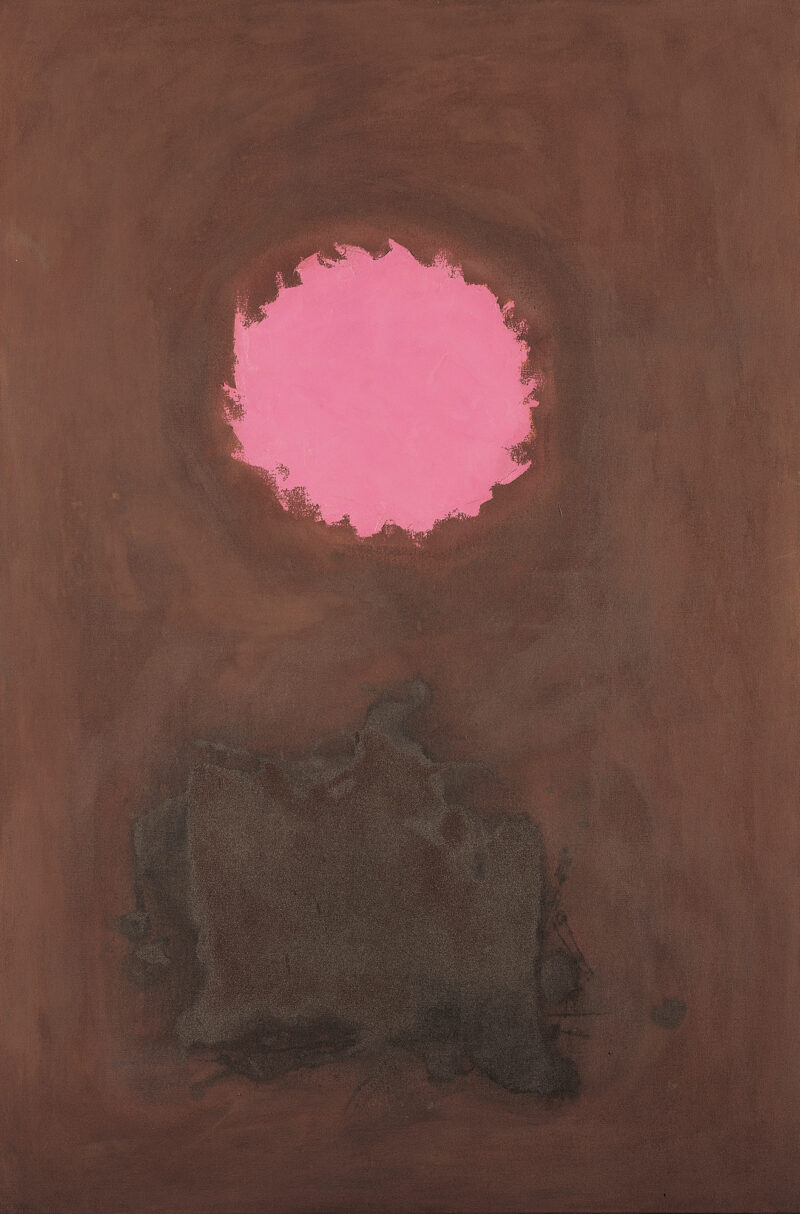
Ripple
Gottlieb, Adolph
1963
Artwork Information
-
Title:
Ripple
-
Artist:
Gottlieb, Adolph
-
Artist Bio:
American, 1903–1974
-
Date:
1963
-
Medium:
Oil on canvas
-
Dimensions:
60 1/8 x 40 1/8 inches
-
Credit Line:
Wichita Art Museum, Museum purchase, Friends of the Wichita Art Museum, Volunteer Alliance
-
Object Number:
1980.90
-
Display:
Not Currently on Display
About the Artwork
Adolph Gottlieb’s stately metaphorical sign painting titled Ripple initiates waves of reverberation from Albert Pinkham Ryder’s romantic mysticism and Arthur Dove’s pantheistic light orbs, through Tamayo’s mythic sun gods to the contemporaneous meditative abstract color canvases of his friend Mark Rothko. Gottlieb, together with Rothko, Jackson Pollack, and Willem de Kooning was a member of the New York School, the mid-20th century American artists who inaugurated the revolutionary movement of abstract expressionism. Ripple exemplifies the signature “burst” compositions that distinguish Gottlieb’s late period, a reductive symbolism of color orb and dark gestural mass floating in the imaginative space of a measureless void.
Gottlieb shared with his New York School colleagues a profound belief in the importance of the subconscious as proposed by scientist-philosophers Sigmund Freund and Karl Jung. The artist especially identified with Jung’s theories of humanity’s universal, primal heritage of archetypes that comprehend all man knows of being in the world. Gottlieb started his search for this universal language in paintings produced during the 1930s and 1940s that laid out pictographic signs in a simple grid of vertical and horizontal lines. Although Gottlieb drew liberally from international sources for his pictographs, both ancient and contemporary, he transformed these borrowed motifs into his own personal alphabet—signs imbued with layered meanings and power.
Starting in 1956 Gottlieb reduced his private vocabulary to two elemental signs that represented for him the universal duality of existence, reflecting the ancient wisdom of the East and the modern psychology of the West, that is, the opposition of order and chaos, spirit and matter, light and dark. These are the signs that appear in Ripple. In this vertically-oriented composition, an all-over field of color, a thin oil wash of a rich brown-red hue, subtly articulated by broad curving brush stokes, serves as environment for two signs: at the top a large circle form with serrated edge painted in a heavy oil paste of brilliant glossy pink seems to float on the surface of the earth-toned background while in the lower zone of the canvas, a brown-black-hued irregular shape, a kind of compact mass of broad gestural strokes and drips seems to be submerged within the chthonic matrix of the ground color. Repeating this basic composition like a mantra through the 1960s and up until his death, Gottlieb achieved a ritualistic innovation of patrician resonance.